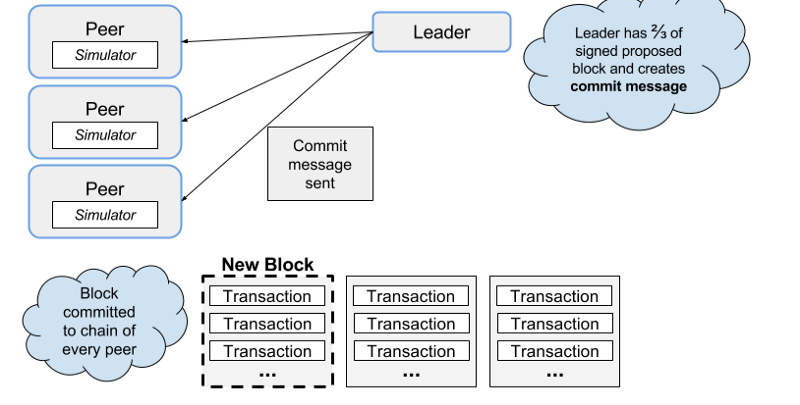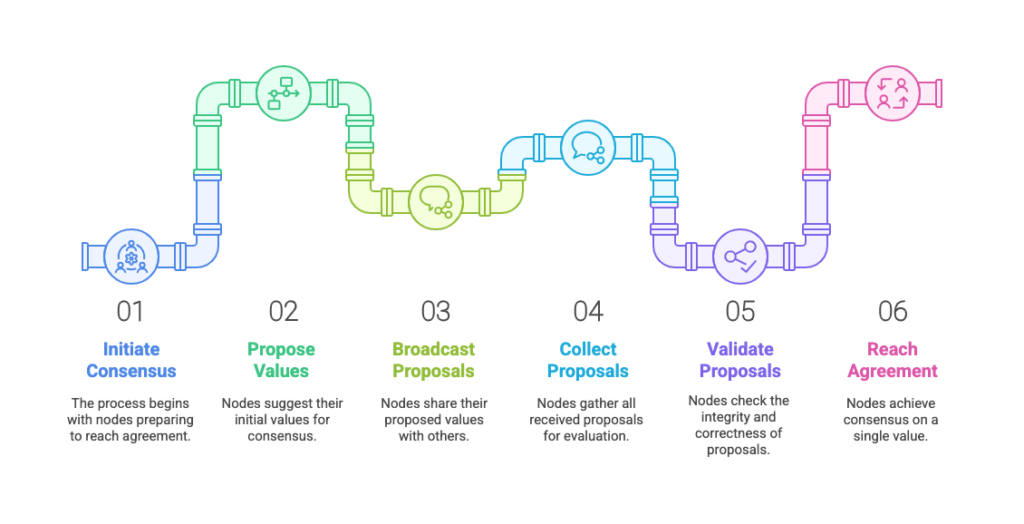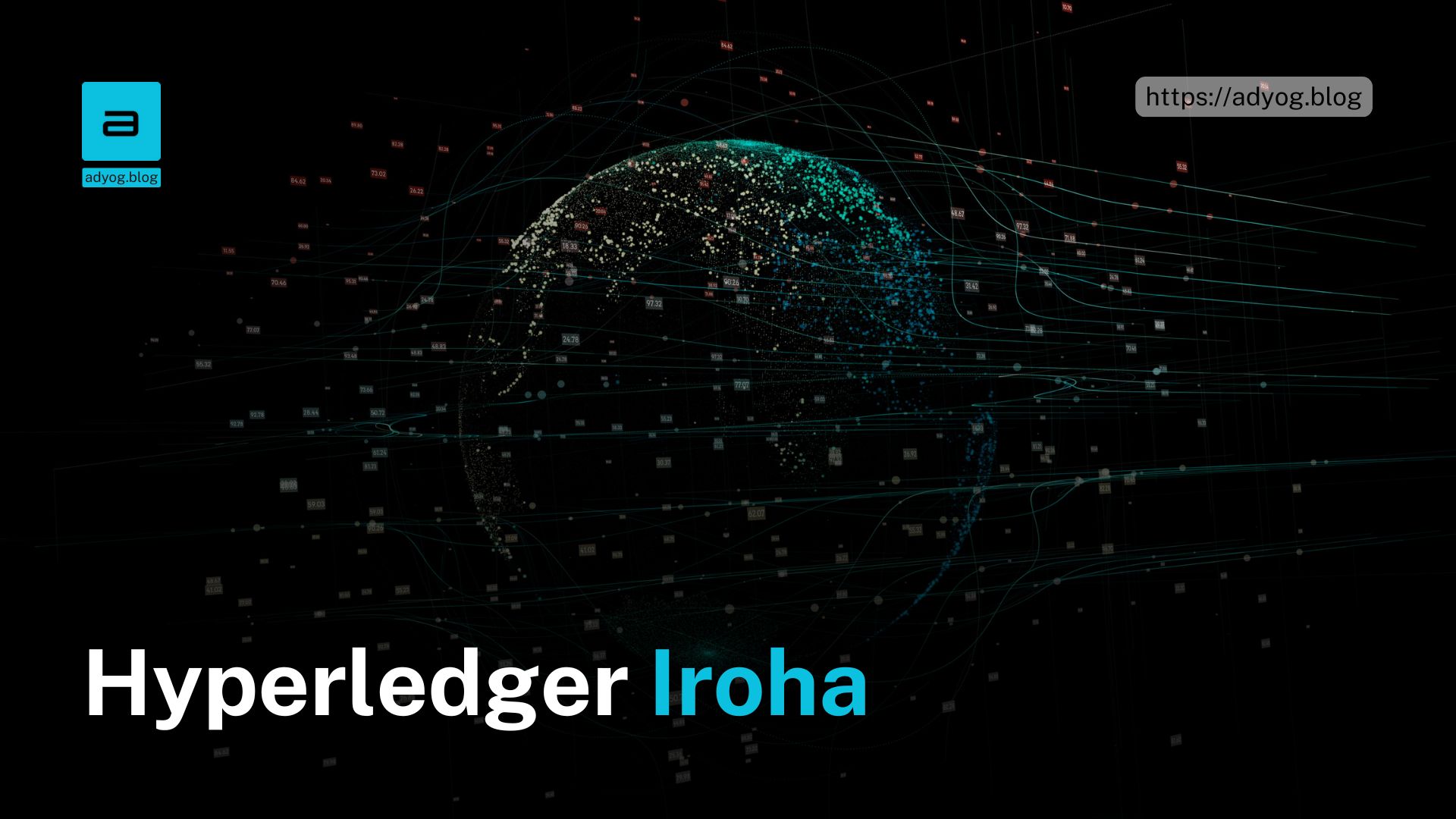Adopting blockchain technology can be daunting for businesses due to complexity, security concerns, and challenges in governance and administration. Hyperledger Iroha, an enterprise blockchain framework under the Linux Foundation’s Hyperledger umbrella, aims to tackle these hurdles with a modular, developer-friendly, and secure design.
This guide is designed for:
- Beginners: Understand blockchain fundamentals and why Hyperledger Iroha is a game-changer.
- Developers: Learn about Iroha’s architecture, tools, and implementation best practices.
We will explore its governance, features, real-world applications, and comparisons with other frameworks like Hyperledger Fabric and Ethereum.
What is Hyperledger Iroha?
Hyperledger Iroha is an open-source blockchain framework that provides tools to develop decentralized applications (dApps). It emphasizes:
- Ease of Use: Designed with developers in mind, its modular architecture makes implementation seamless.
- Enterprise Focus: Targeted at industries like finance, healthcare, and supply chain.
- Robust Security: Features built-in role-based permissions and cryptographic security measures.
Developed by Soramitsu, Hyperledger Iroha leverages a Byzantine Fault Tolerant (BFT) consensus mechanism to ensure reliability and consistency across distributed nodes.
Key Features of Hyperledger Iroha
1. Modular and Extensible Design
Hyperledger Iroha is built with modularity at its core. Developers can use its pre-built components or extend its functionality by integrating custom modules.
2. Role-Based Access Control (RBAC)
Security is a critical aspect of Hyperledger Iroha. It implements RBAC, enabling administrators to define precise permissions for various roles, ensuring controlled access to sensitive data.
3. Efficient Consensus Algorithm
Hyperledger Iroha employs the Yet Another Consensus (YAC) mechanism, a Byzantine Fault Tolerant protocol that ensures:
- High fault tolerance.
- Low latency for transactions.
4. Command Query Responsibility Segregation (CQRS)
Iroha follows the CQRS architectural pattern, separating commands (updates to the blockchain) from queries (data retrieval). This enhances system scalability and performance.
5. User-Focused APIs
Iroha offers a set of high-level APIs that simplify common operations like managing accounts, creating assets, and querying transactions.
6. Multi-Signature Support
For enterprises requiring extra layers of transaction validation, Iroha supports multi-signature transactions.
Hyperledger Iroha Architecture
The architecture of Hyperledger Iroha reflects its goal of modularity and efficiency:

1. Ledger
The ledger stores transaction data immutably. Each block contains a cryptographic hash that links it to the previous block, ensuring integrity.
2. Peers
Nodes in the network act as peers, maintaining a synchronized copy of the ledger.
3. Consensus Layer
The YAC consensus mechanism enables the network to agree on the current state of the ledger even in the presence of malicious or faulty nodes.
4. Client Applications
Iroha allows external applications to interact with the blockchain via REST or gRPC APIs.
5. Smart Contracts (Commands)
Hyperledger Iroha supports smart contract-like functionality through a predefined set of commands, reducing complexity while maintaining flexibility.
Governance and Administration in Hyperledger Iroha
Hyperledger Iroha simplifies blockchain management with strong governance mechanisms, ensuring that enterprise-level networks remain secure, transparent, and efficiently administered.
1. Role-Based Access Control (RBAC)
Iroha uses RBAC to assign granular permissions to different roles, enabling network administrators to define who can:
- Create, modify, and query data.
- Issue and manage digital assets.
- Approve transactions in multi-signature workflows.
2. Network Management
Administrators can easily onboard or remove nodes from the network. Iroha’s architecture ensures seamless synchronization across all peers while maintaining data integrity.
3. Governance Structure
Iroha’s governance is designed for permissioned networks, giving businesses the control they need over decision-making processes while ensuring compliance with enterprise policies.
4. Monitoring and Maintenance
Built-in APIs and logging mechanisms provide real-time insights into network health, making it easier to monitor transactions and address issues proactively.
Key Features of Hyperledger Iroha

1. Ease of Use
Hyperledger Iroha’s predefined commands streamline blockchain operations, making it simpler for developers and businesses to adopt.
2. Security-Centric Design
Iroha ensures data integrity and access control through:
- RBAC for granular permissions.
- BFT Consensus (YAC) for network stability in the presence of malicious nodes.
3. Multi-Signature Transactions
Support for multi-signature transactions allows multiple approvals, making it ideal for collaborative environments such as finance or supply chain management.
4. API and CLI Support
Iroha provides REST and gRPC APIs alongside a command-line interface, enabling efficient interaction with the blockchain network.
5. Efficient Consensus Mechanism
The Yet Another Consensus (YAC) protocol ensures high fault tolerance and low latency, making Iroha suitable for enterprise-grade use cases.
Comparison with Other Blockchain Platforms
Hyperledger Iroha vs. Hyperledger Fabric
| Feature | Hyperledger Iroha | Hyperledger Fabric |
|---|---|---|
| Ease of Use | High (Predefined Commands) | Moderate (Complex Configurations) |
| Smart Contracts | Predefined Commands | Fully Programmable |
| Modularity | Lightweight | Highly Customizable |
| Target Use Cases | Simple Permissioned Systems | Complex Enterprise Networks |
Key Takeaway: Iroha is simpler to deploy, while Fabric is better for highly customizable and complex networks.
Hyperledger Iroha vs. Ethereum
| Feature | Hyperledger Iroha | Ethereum |
|---|---|---|
| Consensus Mechanism | Byzantine Fault Tolerance (YAC) | Proof of Stake / Proof of Work |
| Smart Contracts | Predefined Commands | Turing-Complete Contracts |
| Target Audience | Enterprises, Permissioned Networks | Decentralized Apps, Open Networks |
Key Takeaway: Hyperledger Iroha excels in permissioned networks, whereas Ethereum is designed for decentralized applications.
Real-World Use Cases
1. Supply Chain Management
- Challenge: Transparency in goods tracking.
- Solution: Iroha ensures immutability, improving trust among stakeholders by recording every step of the supply chain.
2. Financial Services
- Challenge: Inefficient cross-border payments.
- Solution: Facilitate secure, fast, and low-cost digital asset transfers with Iroha.
3. Identity Management
- Challenge: Data breaches in centralized systems.
- Solution: Create decentralized identity systems, giving users control over their data.
4. Healthcare
- Challenge: Lack of interoperability in patient data sharing.
- Solution: Securely store and share medical records while ensuring privacy compliance.
Getting Started with Hyperledger Iroha
1. System Requirements
- OS: Linux or macOS (recommended).
- Dependencies: Docker, CMake, and gRPC.
2. Installation
Clone the official repository and set up Docker:
git clone https://github.com/hyperledger/iroha.git cd iroha
docker-compose up3. Run a Test Network
Launch a test network using Docker Compose:
docker-compose -f docker-compose.yml up4. Learning Curve
- Beginners: Iroha’s predefined commands and detailed documentation reduce the learning curve.
- Developers: With its API-driven approach, Iroha simplifies integration with existing enterprise systems.
5. Interacting with the Blockchain
Use Iroha’s APIs or CLI to create accounts, issue assets, and query transactions.
FAQs About Hyperledger Iroha
1. What is Hyperledger Iroha best used for?
Hyperledger Iroha is tailored for permissioned blockchain networks where simplicity, security, and modularity are critical. Common applications include supply chain management, financial services, and identity management.
2. Does Iroha support smart contracts?
Unlike platforms like Ethereum, Iroha uses predefined commands instead of Turing-complete smart contracts. This approach simplifies operations, minimizes security risks, and ensures predictable behavior.
3. What programming languages does Iroha support?
Hyperledger Iroha provides APIs for integration with popular programming languages like Java, Python, C++, and JavaScript.
4. What makes Iroha different from Hyperledger Fabric?
Hyperledger Iroha is lightweight and focuses on predefined command-based operations, making it easier to deploy and use. In contrast, Hyperledger Fabric offers high customizability, supporting Turing-complete smart contracts and complex modular architectures.
5. Is Hyperledger Iroha suitable for small businesses?
Yes, Iroha’s developer-friendly design and low deployment complexity make it suitable for small businesses that need a blockchain solution without the overhead of highly technical customizations.
6. How does Hyperledger Iroha handle security?
Iroha ensures security through:
- Role-Based Access Control (RBAC): Granular permissions for users and roles.
- Byzantine Fault Tolerance (BFT) Consensus (YAC): Ensures ledger consistency despite faulty or malicious nodes.
- Cryptographic Mechanisms: Protects data integrity and prevents unauthorized access.
7. What industries can benefit the most from Iroha?
Industries such as finance, healthcare, logistics, government services, and identity management can leverage Iroha to improve operational transparency, enhance data security, and optimize processes.
8. What are the system requirements for deploying Hyperledger Iroha?
Hyperledger Iroha works best on Linux or macOS. It requires tools like Docker, CMake, and gRPC for installation and deployment. Recommended system specifications include:
- CPU: Dual-core processor or higher.
- RAM: 4GB or more.
- Disk Space: 10GB minimum for test networks.
9. What is the learning curve for Hyperledger Iroha?
- Beginners: Iroha’s predefined commands and straightforward APIs make it easier to grasp compared to platforms like Fabric or Ethereum.
- Developers: Knowledge of REST APIs, Docker, and basic cryptography will help developers get started quickly.
10. Where can I find resources to learn more about Hyperledger Iroha?
Here are some essential resources to deepen your understanding:
Hyperledger Iroha Official Documentation
Hyperledger Iroha GitHub Repository
Strengths and Limitations
Strengths
- Simplicity: Predefined commands make it accessible for enterprises.
- Security: RBAC and BFT ensure robust protection.
- Open Source: Supported by an active community and Hyperledger resources.
Limitations
- Smart Contracts: Lacks the flexibility of Turing-complete contracts.
- Smaller Ecosystem: Limited tools compared to Ethereum or Fabric.
Advantages of Hyperledger Iroha
- Developer-Friendly: Easy integration with minimal complexity.
- Lightweight Design: Optimized for environments with limited resources.
- Security First: Ensures data integrity with robust access controls.
- Open Source: Backed by an active developer community and Hyperledger support.
Challenges and Limitations
While Hyperledger Iroha is a powerful framework, it has its limitations:
- Lack of Turing-Complete Smart Contracts: Limited flexibility compared to Ethereum or Hyperledger Fabric.
- Smaller Ecosystem: Fewer tools and libraries compared to popular blockchain platforms.
- Resource Intensity: Running a network may require significant computational resources.
Conclusion
Hyperledger Iroha is a practical and robust blockchain framework designed for industries seeking simplicity, security, and scalability. Its modular architecture and user-friendly APIs make it a strong candidate for enterprises venturing into blockchain.
Whether you’re a developer building dApps or an enterprise looking to enhance operational transparency, Hyperledger Iroha offers a streamlined path to blockchain adoption. Start exploring this powerful framework today and unlock its potential for your next big project.

Leave a Reply